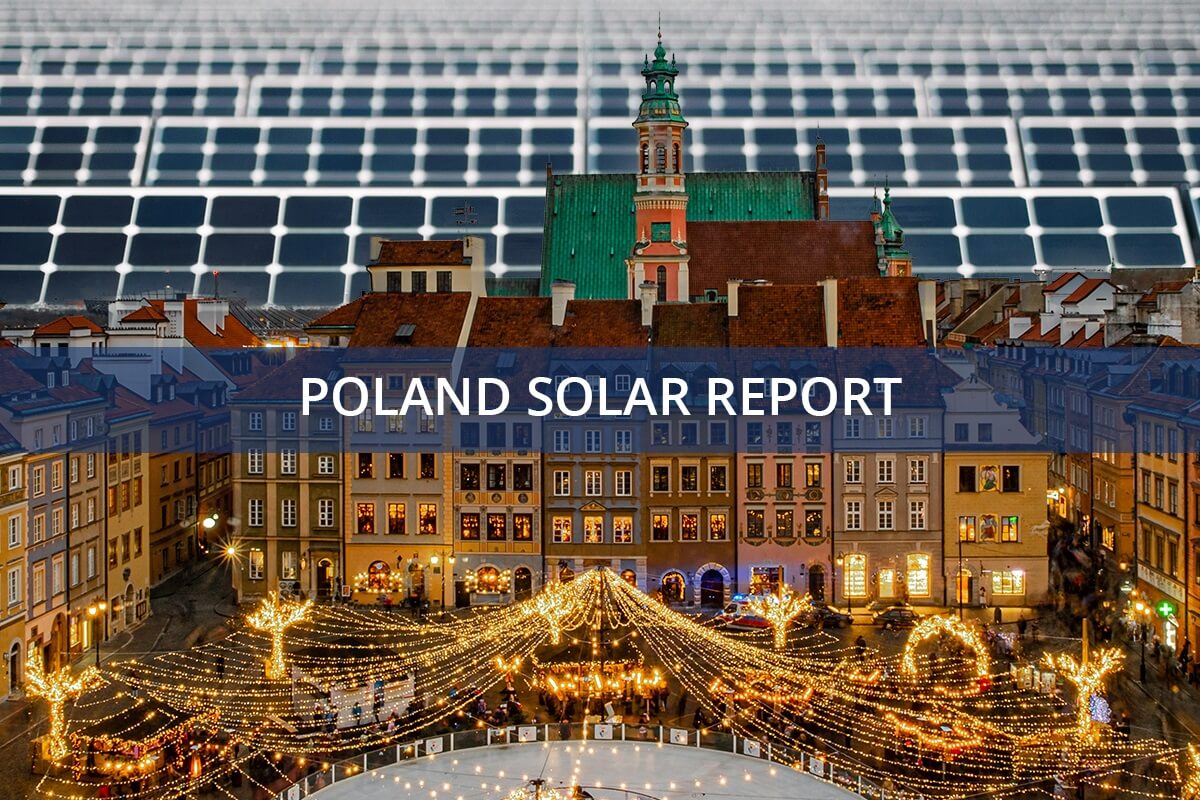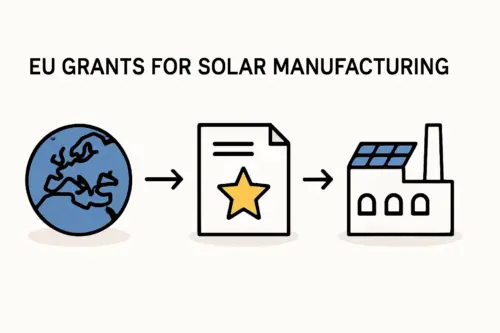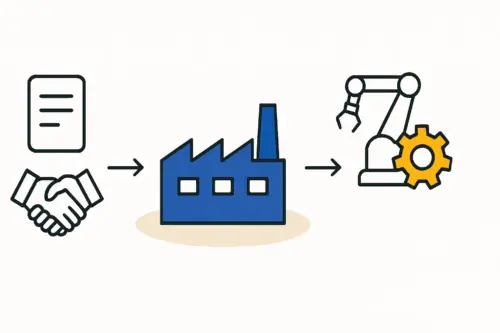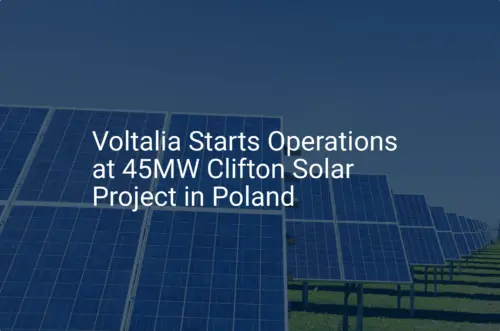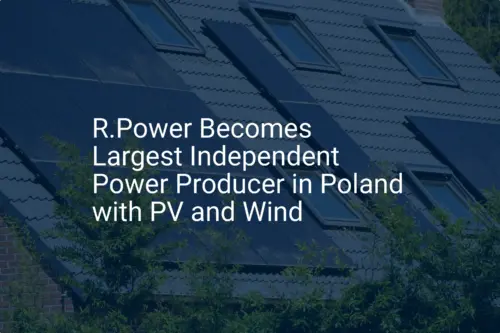The Polish Grid: A Critical Factor in Your Solar Factory’s Success
An entrepreneur finalizes the blueprints for a new solar module factory. The location is secured, building plans are approved, and machinery suppliers are on standby. But a critical dependency has been overlooked: the high-capacity connection to the national power grid.
Often left until late in the planning stage, this single element can introduce significant delays and unforeseen costs, jeopardizing the entire project timeline.
A solar module factory is an energy-intensive operation. While its end product generates clean energy, the manufacturing process itself requires a stable and substantial supply of electricity. For investors considering Poland as a manufacturing base, understanding the nuances of the country’s energy landscape and grid connection process is more than a mere technicality—it’s the cornerstone of a viable business plan. This article offers a strategic overview of securing a grid connection and managing energy costs for an industrial facility in Poland.
Poland’s Energy Landscape: A Strategic Overview
To appreciate the importance of grid connections and energy tariffs, it’s essential to understand Poland’s national energy system. The country is in the midst of a significant energy transition, having historically relied on coal for most of its electricity. This legacy has several direct consequences for industrial investors.
First, electricity prices for industrial consumers can be volatile. Driven by the rising costs of CO2 emission allowances under the EU Emissions Trading System (ETS) and fluctuating global commodity prices, the cost of coal-fired generation has increased. Industrial electricity prices in Poland have often been among the highest in the region, with average costs fluctuating around €150–200 per megawatt-hour (MWh) in recent years.
The Polish government and energy sector are also actively promoting a shift towards renewable energy, including large-scale solar and wind projects. This transition places new demands on the national grid, which must be modernized to handle decentralized and intermittent power generation. For a new factory, this means connecting to a grid that is itself undergoing transformation—a process that requires careful navigation.
Securing a Grid Connection: A Step-by-Step Process
Connecting a factory with a power demand of several megawatts (MW) is a formal, multi-stage process that can take 12 to 24 months. This makes it a critical-path item that must be initiated in the earliest stages of project development.
The process primarily involves two types of entities:
-
Transmission System Operator (TSO): Polskie Sieci Elektroenergetyczne (PSE) is the sole TSO in Poland, managing the high-voltage transmission network. A very large facility might connect directly to its network.
-
Distribution System Operators (DSOs): Companies like PGE, Tauron, Enea, and Energa manage the regional medium- and low-voltage distribution networks. Most factories will connect to a DSO.
Ready to make big Profits?
The solar Industry is Booming
WE HELP NEWCOMERS to the solar industry start their own solar module production line. Customers can make BIG PROFITS by selling modules and finding investors, without wasting money and time on things they don't need!
The Connection Procedure
-
Application for Connection Conditions: The first formal step is to submit an application to the relevant DSO. This application must include detailed information, such as the planned location, the required connection capacity (in MW), and the technical specifications of the planned facility. Proof of legal title to the property is essential at this stage.
-
Issuance of Connection Conditions: The DSO assesses the application and the network’s capacity to accommodate the new load. If feasible, it issues ‘connection conditions,’ a technical document specifying the requirements, the connection point, and the estimated costs. This process can take several months.
-
Grid Connection Agreement: Once the investor accepts the conditions, a formal grid connection agreement is signed. This contract outlines the responsibilities of both parties, the detailed technical scope of work for the connection, the project schedule, and the payment terms. A significant portion of the connection fee is typically required upon signing.
-
Construction and Commissioning: The DSO then undertakes the necessary construction work to establish the grid connection, which may involve laying new cables or building a small substation. The timeline for this work is a major variable. Based on experience from J.v.G. turnkey projects in Central Europe, securing the grid connection can sometimes take longer than constructing the factory building itself.

Understanding Industrial Electricity Tariffs
Once connected, the factory’s operational expenditure will be heavily influenced by its electricity tariff. An industrial electricity bill in Poland is not a single number but a composite of several key elements:
-
Energy Charge (Cena energii czynnej): This is the cost of the electricity consumed, priced per MWh. This portion is most exposed to market fluctuations and is where different suppliers compete.
-
Distribution Fee (Opłata dystrybucyjna): This covers the cost of transporting electricity through the DSO’s network to the factory. It is regulated by the national energy regulator (URE) and is less variable.
-
Capacity Charge (Opłata mocowa): Introduced in 2021, this fee is intended to ensure the security of the power supply by paying power plants to be available when needed. It is charged based on electricity consumption during peak hours and can be a significant cost component.
-
RES Fee (Opłata OZE): A charge that supports the national renewable energy auction system.
A detailed understanding of these components is crucial for accurate financial modeling. For instance, the machinery used in a factory, from laminators to stringers, will determine the overall power profile and thus the total cost. Exploring efficient and modern turnkey solar production lines is a key step in managing future energy consumption.
Strategic Mitigation: Using Your Own Product to Reduce Costs
A powerful strategy for any solar module manufacturer is to become a significant generator of its own electricity. Installing a large-scale solar PV system on the factory’s rooftop or adjacent land offers compelling advantages in the Polish context.
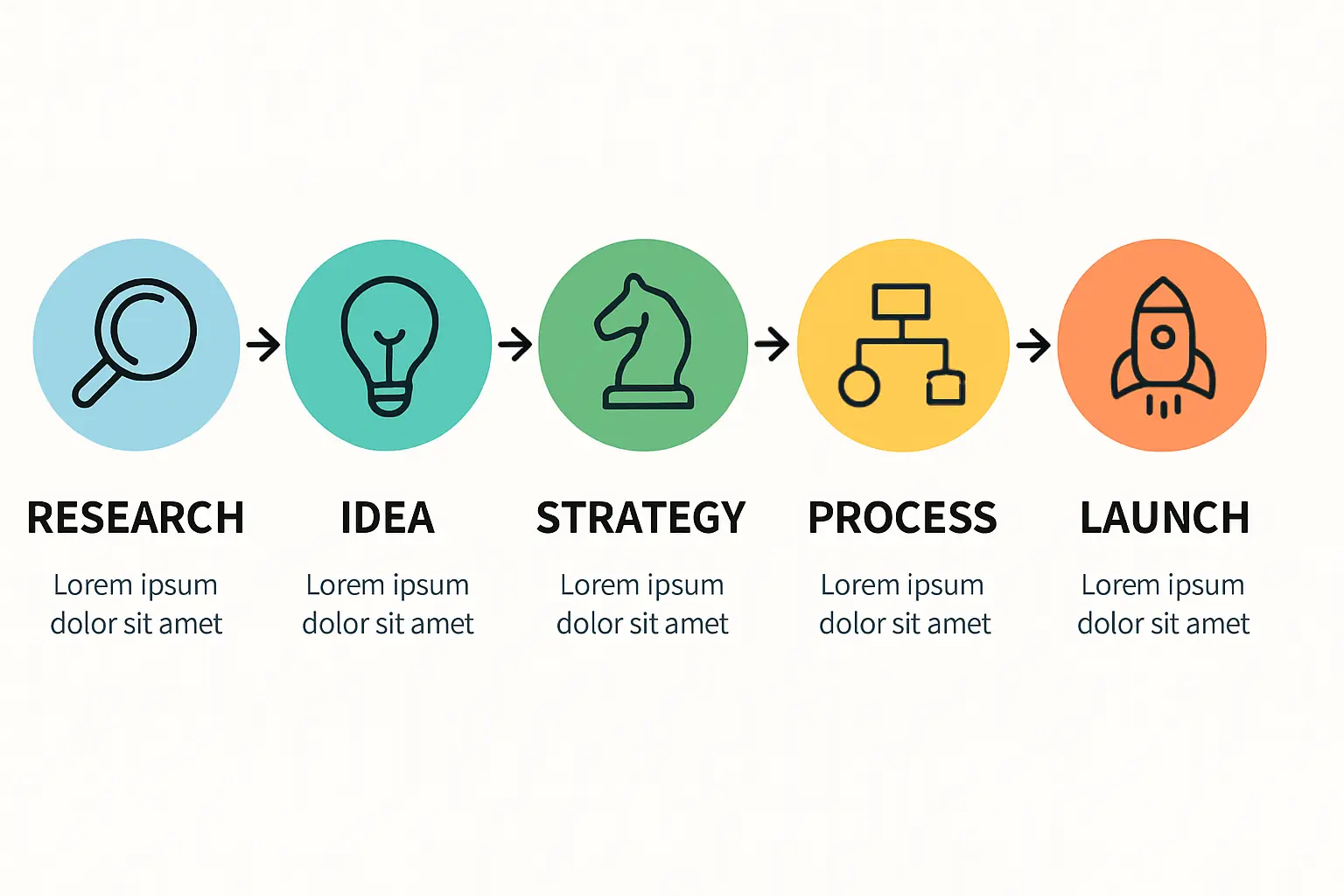
Generating power on-site allows a factory to:
-
Reduce Grid Dependency: A significant portion of the factory’s daytime electricity needs can be covered by its own solar installation, directly lowering the amount of energy purchased from the grid.
-
Hedge Against Price Volatility: On-site generation insulates the business from fluctuations in the wholesale energy market and changes to grid tariffs. The cost of solar energy is fixed once the system is installed.
-
Lower the Capacity Charge: By reducing consumption from the grid during peak hours (which often coincide with peak solar production), the factory can significantly lower its monthly capacity charge.
This approach transforms a major operational cost into a strategic asset. It’s a natural step for any entrepreneur planning to start a solar panel business, as it demonstrates the product’s value directly within the company’s own operations.
Frequently Asked Questions (FAQ)
How much power does a typical 50 MW solar factory need?
A factory with an annual production capacity of 50 MW typically requires a grid connection of approximately 1 to 1.5 MW. This capacity must be consistently available, especially during the energy-intensive lamination and testing stages of the solar panel manufacturing process.
Can an investor start the grid connection process before owning the land?
No, Polish regulations require proof of legal title to the property (e.g., an ownership deed or a long-term lease agreement) as part of the initial application for connection conditions. This is why securing land is a prerequisite for formally engaging with the DSO.
Is Poland a good location for a solar factory despite its grid challenges?
Yes, Poland presents a strong business case. It has a large domestic market, a skilled industrial workforce, and is strategically located within the European Union. While the grid connection requires careful planning, the challenges are manageable with proper foresight. The push towards renewables also creates long-term market opportunities for locally produced solar modules.
What is the main difference between a Transmission System Operator (TSO) and a Distribution System Operator (DSO)?
The TSO (PSE in Poland) operates the national high-voltage ‘motorway’ of the power grid, transmitting electricity over long distances. DSOs operate the regional medium- and low-voltage ‘local roads’ that deliver electricity to end-users like factories and homes. This is why a factory’s connection point will almost always be with a regional DSO.
Conclusion: Planning for Power is Planning for Success
For any investor planning to establish a solar module factory in Poland, the grid connection and energy cost structure are not administrative afterthoughts; they are central pillars of the business plan. Initiating the grid connection process early, performing detailed due diligence on potential sites, and developing a strategy for on-site power generation can significantly de-risk the project and enhance its long-term profitability.
By treating the energy supply with the same strategic importance as the building or production equipment, an investor can lay a robust foundation for a successful and resilient manufacturing operation in the heart of Europe’s evolving energy market. For those seeking structured guidance through these and other planning stages, the pvknowhow.com platform provides comprehensive resources to support the entire journey.


